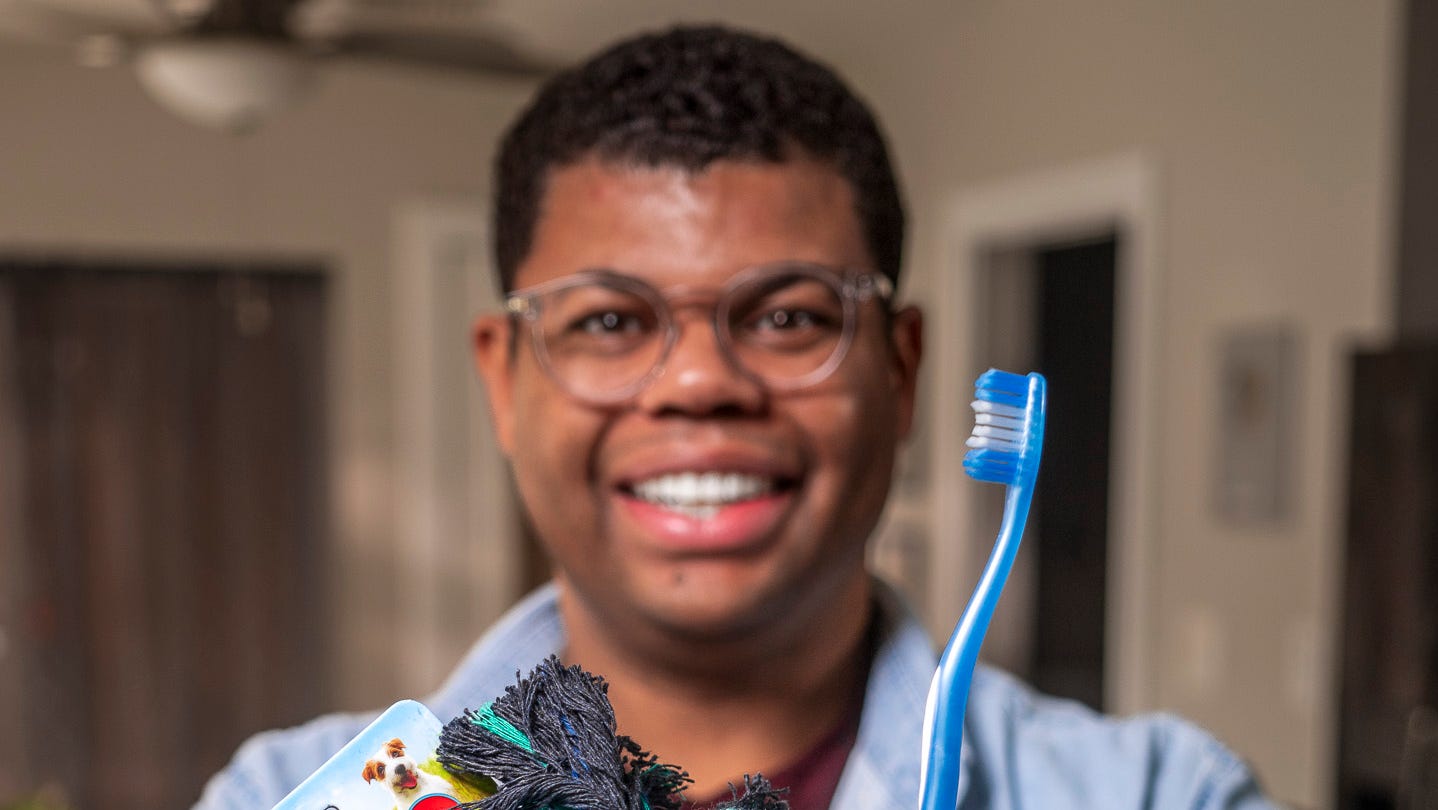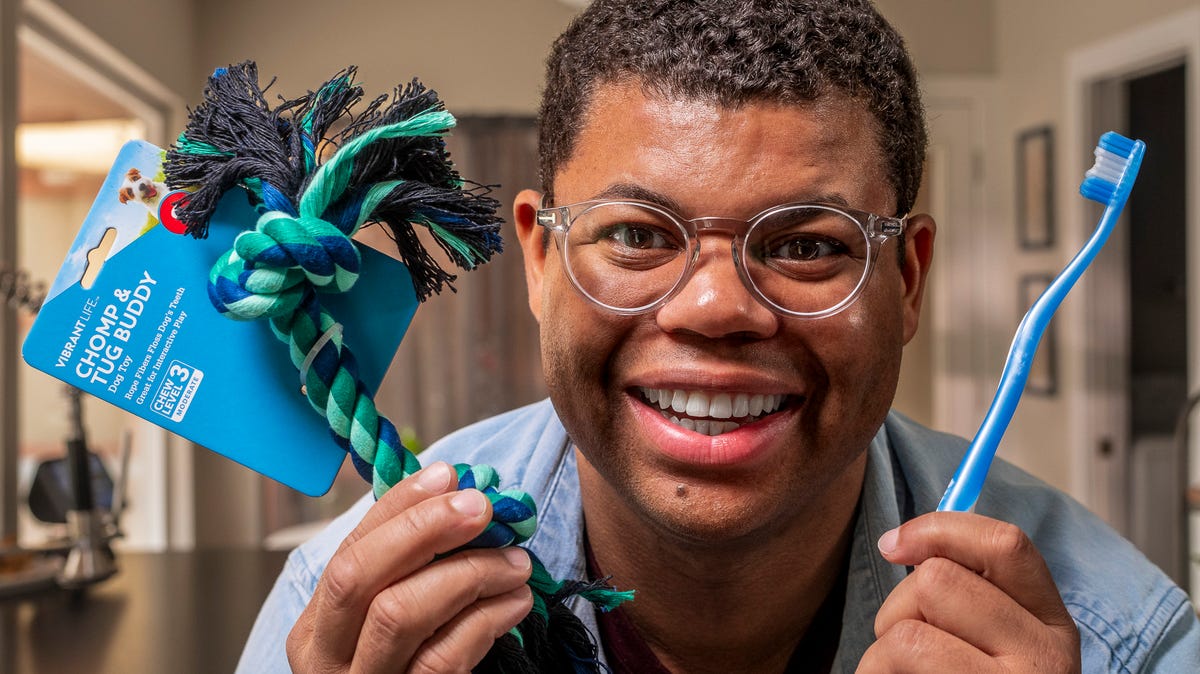
Dental hygiene tips for dogs and cats
Avoid expensive visits to the vet by taking care of your pets’ dental hygiene.
Problem Solved
Cats and dogs need dental care, too! While they don’t need routine visits to the dentist like their human companions do, it is still just as important to keep their teeth clean as it is to keep yours clean. Like humans, pets can have bad breath and face the risk of plaque buildup, gum disease and tartar, which can cause oral health issues and could result in the loss of teeth, or the costly professional removal of teeth.
However, since they lack opposable thumbs and the ability to use a toothbrush, they need some help from you.
Watch this video for 4 easy ways to keep your pet’s teeth clean.
How often should you brush your dog’s teeth
You should aim to brush your dog’s and cat’s teeth at least 2-3 times per week, according to PetMD.
Many veterinarians perform a routine check of your pet’s mouth during a routine visit, where they will see any oral issues developing in your pet’s mouth.
How to brush a dog’s, cat’s teeth
The best way to familiarize your pet with having their teeth cleaned is to start getting them used to it as soon as you can. The younger they are when you start, the easier it is to do as they get older.
First, you need the right tools: a pet-safe toothbrush and toothpaste.
For puppies and kittens, start by getting them used to having a toothbrush in their mouth and the lifting of their lips. You can easily incorporate this into their regular grooming routine, so they are familiar with being brushed, having their nails trimmed and having their teeth checked and cleaned.
Not all pets are comfortable with having their teeth brushed, so it may require some time, effort and patience to get your pet comfortable with it, especially if the animal is older. Fortunately, using a toothbrush isn’t the only way to clean your pet’s teeth. Keep reading for some toothbrush-free alternatives.
Shop top-rated related products:
Easy ways to clean your dog’s teeth
Our lives are busy, so frequent brushing of our pets’ teeth isn’t always feasible. Consider some of these alternatives that still allow you to clean their teeth, but might be a more manageable way to go about it.
- Let a professional handle it. Some pets don’t do well with oral care, so ask your vet for a recommendation on where to get your pet’s teeth professionally cleaned. However, depending on the pet and the dental care or work that’s needed, it may require them to go under anesthesia and can be costly.
- Finger toothbrush. These fit on your finger and are an alternative to a traditional toothbrush. These are good for smaller dogs. However, keep in mind your pet’s temperament and consider any potential risks of putting your finger in their mouth.
- Plaque wipes. Use these to wipe their teeth and gums to help fight against plaque buildup. Wipes can be a good alternative if your pet isn’t a fan of the toothbrush or considers it a toy, not a cleaning tool.
- Powders or chews. These alternatives don’t require as much work or risk of directly brushing your pet’s teeth.
- Toys. Make teeth cleaning fun and let a toy do all the gritty work. Some rope toys can double as a flosser, while some harder toys can work on fighting plaque and other gunk on teeth. Just look at the label to see if the toy also doubles as a teeth cleaner. Also, check that the toy is appropriate for the size and age of your pet.









